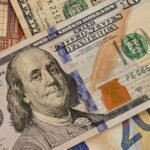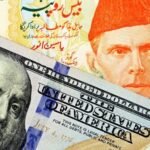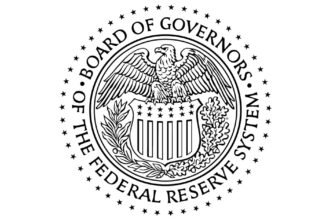Unlock the White House Watch newsletter for free
Your guide to what Trump’s second term means for Washington, business and the world
Foreign-exchange trading volumes hit a record $10tn a day during the fallout from Donald Trump’s “liberation day” tariff blitz, underlining the currency markets’ growing role as the front line for global volatility.
There were an average of $9.6tn of daily transactions in April, according to the latest triennial report from the Bank for International Settlements, up from $7.5tn in the same month three years earlier.
The data underscores the relentless growth of forex volumes in recent decades, and the growing influence that this over-the-counter trading — deals struck privately between banks — has over global financial markets. The UK retained its position as the leading forex trading hub, with 38 per cent of the April trading activity.
The BIS report, which collected data from more than 1,000 banks and other dealers, cited “elevated FX volatility and a surge in trading activity that followed trade policy announcements” in its preliminary analysis of the data, published on Tuesday.
“This is the year of FX,” said Ollie Jerome, head of FX Europe at Deutsche Bank.
April was a particularly volatile month due to the tumult triggered by Trump’s “liberation day” tariff announcements, which sparked a slide in the dollar against other major currencies such as the euro and a wave of hedging by investors trying to protect themselves against further swings.
“The client activity on the back of [liberation day] was enormous,” Jerome said. “April 2025 was the biggest month by volumes that we’ve ever seen.”
The biggest share of the monthly volumes continued to be made up of forex swaps, agreements to exchange different currencies and unwind at a future date, which accounted for $4tn of the daily turnover.
The BIS has previously called forex swaps a “linchpin” between currency and government bond markets, and a key reason why government bond markets have become more internationalised since the financial crisis — meaning a problem in one country’s sovereign debt market can very quickly spill into another’s.
Tuesday’s report also underlined the burst of currency hedging this year by global investors trying to protect themselves from volatility as the US dollar had its worst start to the year in decades. This has contributed to bumper trading conditions for Wall Street banks.
The share in the forex market of so-called forwards, used by investors to lock in a future exchange rate, rose to 19 per cent of turnover in the data, from 15 per cent three years earlier.
Volumes of forex options, another popular way of hedging currency swings, more than doubled, accounting for 7 per cent of turnover.
But the data underscored the continued dominance of the US currency in forex markets, with the dollar being on one side of 89 per cent of trades, up from 88 per cent three years earlier, while the share of euro and sterling trades fell slightly.
In the over-the-counter market for interest rate derivatives, however, euro-denominated contracts surpassed that of the dollar on the BIS’s data, which it attributed to a shift in trading activity of dollar contracts into exchange-traded derivatives.





















